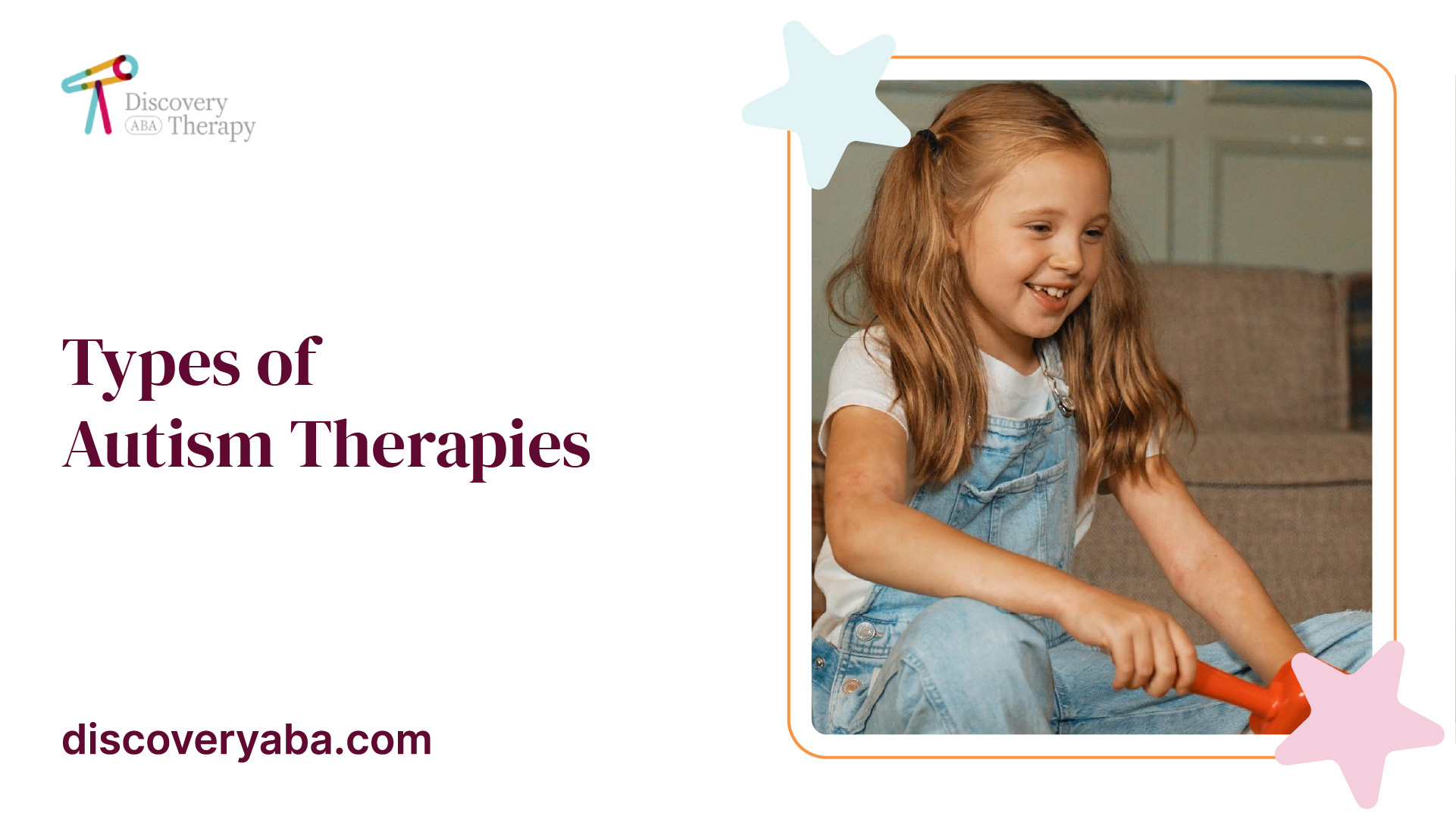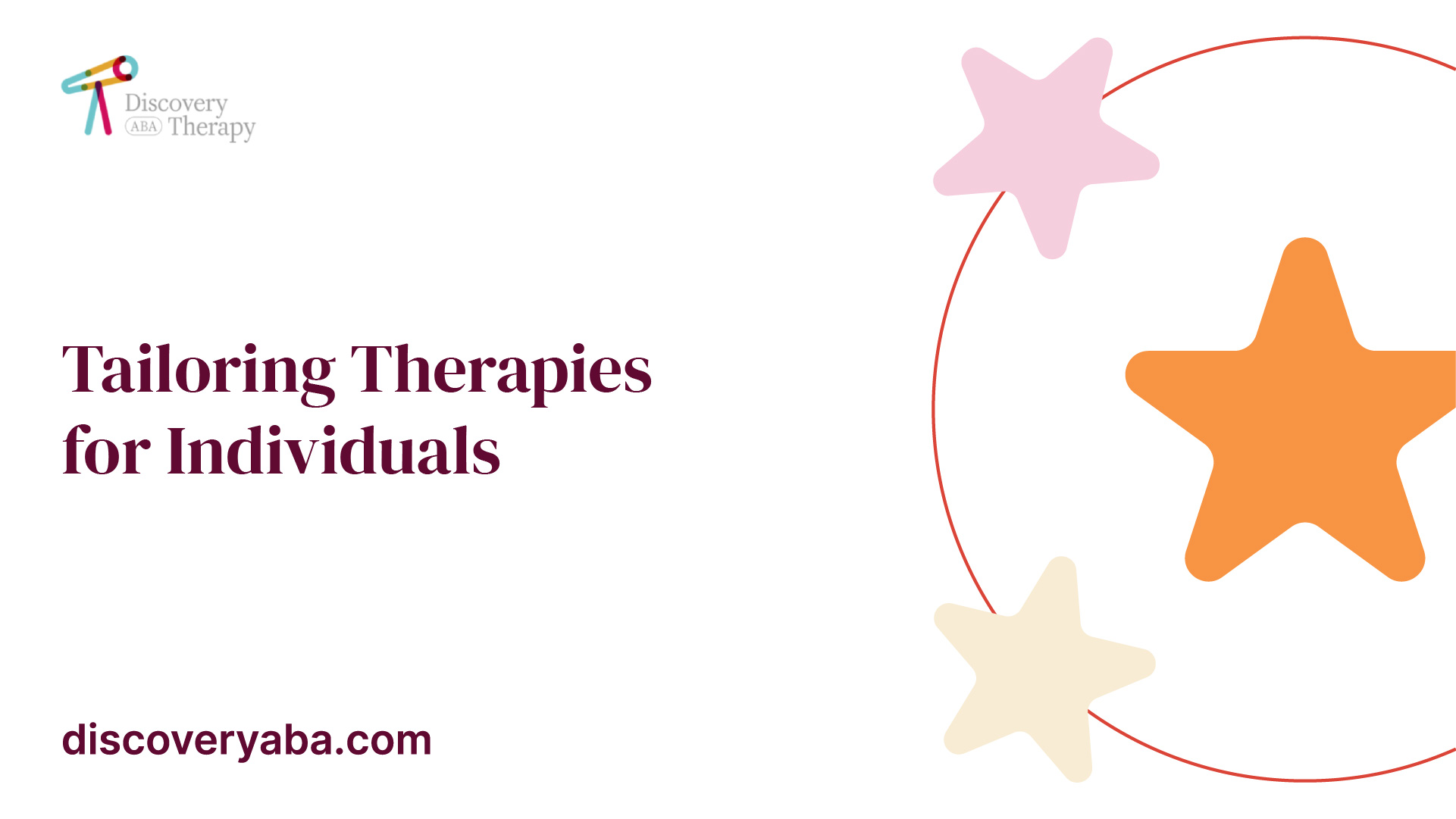Types of Autism Therapies
Discover the types of autism therapies that can make a difference. From ABA to speech therapy, find the right approach for you.


Understanding Autism Therapies
When it comes to autism, selecting the right therapies for individuals is of utmost importance. Each person with autism has unique strengths, challenges, and needs, so tailoring therapies to their specific requirements is crucial. In this section, we will explore the importance of therapy selection and the significance of tailoring therapies for individuals with autism.
Importance of Therapy Selection
Choosing the appropriate therapies is vital for individuals with autism. While there is currently no one standard treatment for autism spectrum disorder (ASD), there are various therapies and interventions available to help minimize symptoms and maximize abilities. Research and experience have shown that individuals with ASD have the best chance of utilizing their abilities and skills when they receive appropriate therapies and interventions [1].
Therapy selection should be based on several factors, including the individual's age, developmental level, strengths, challenges, and specific needs. It is essential to consider the goals of therapy, such as improving communication skills, enhancing social interactions, managing behaviors, and promoting independence. By matching the therapy approach to the individual's unique requirements, therapy can be more effective in addressing their specific challenges.
Tailoring Therapies for Individuals

Each individual with autism is unique, and their therapy should reflect their individuality. Tailoring therapies involves customizing approaches and techniques to best suit the person's strengths, preferences, and developmental stage. This personalized approach helps to maximize the effectiveness of the therapy and ensures that it addresses the specific challenges and goals of the individual.
For example, in speech therapy for children with autism, principles such as Voice Output AAC, Picture Communication System, Sign Language, and social instruction in different settings may be used to target communication skills [2]. Applied Behavior Analysis (ABA), the most commonly used therapy for children with autism, focuses on developing social skills, improving language competency, and enhancing good behavior using positive reinforcement techniques. On the other hand, Relationship Development Intervention (RDI) emphasizes forming bonds with parents and family members, with parents becoming the primary therapists as part of the program [3].
Occupational therapy is another crucial aspect of autism therapy. Occupational therapists work with individuals on the autism spectrum to assess skill levels and identify barriers to independence and engagement in meaningful activities. They tailor interventions to improve communication, play, and relationships, focusing on the unique needs of each individual [4].
By tailoring therapies, individuals with autism can receive interventions that are specifically designed to meet their unique needs and enhance their overall development. The personalized therapy approach recognizes the individuality of each person with autism and promotes their progress and success in various areas of life.
In the following sections, we will explore different types of autism therapies, including behavioral therapies, communication therapies, alternative therapies, and occupational therapy, each with its own specific focus and benefits.
Behavioral Therapies
When it comes to autism therapies, behavioral therapies play a significant role in helping individuals with autism develop essential skills and improve their overall quality of life. Two commonly used behavioral therapies for autism are Applied Behavior Analysis (ABA) and Relationship Development Intervention (RDI).
Applied Behavior Analysis (ABA)
Applied Behavior Analysis (ABA) is one of the most widely recognized and researched therapies for children with autism. The goal of ABA is to enhance social skills, improve language competency, and promote positive behavior patterns through the use of positive reinforcement techniques, meaningful rewards, and consequences [3].
ABA utilizes systematic and evidence-based approaches to understand and modify behavior. It involves breaking down complex skills into smaller, manageable steps and using techniques like discrete trial training and shaping to teach new behaviors. ABA therapists track progress and make data-driven decisions to tailor interventions to each individual's needs.
It is important to note that while ABA has been widely adopted, there has been some controversy surrounding its use. Critics argue that earlier versions of ABA used punishments as well as rewards, which raised concerns. However, modern ABA no longer uses punishments, and practitioners are trained to make learning fun and interesting for the child.
Relationship Development Intervention (RDI)
Relationship Development Intervention (RDI) is another behavioral therapy that focuses on improving social and emotional skills in individuals with autism. RDI aims to address the core deficits associated with autism, such as difficulties in perspective-taking, flexible thinking, and building meaningful relationships.
The main goal of RDI is to foster dynamic thinking and social competence by promoting joint attention, shared experiences, and collaborative problem-solving. RDI therapists work closely with individuals with autism and their families to develop skills in areas such as emotional regulation, social referencing, and flexible thinking.
RDI places a strong emphasis on the parent-child relationship and encourages parents to take an active role in the therapy process. By empowering parents to become co-therapists, RDI aims to create meaningful and lasting changes in the child's social communication skills.
Both ABA and RDI have their own strengths and applications when it comes to addressing the unique needs of individuals with autism. It is essential to consult with professionals and consider the specific needs of the individual when selecting the most suitable therapy. To learn more about other types of autism therapies, continue reading our article on types of autism therapies.
Communication Therapies

Effective communication is a crucial aspect of enhancing the lives of individuals with autism. Communication therapies play a vital role in helping individuals with autism develop and improve their communication skills. In this section, we will explore two important communication therapies: speech therapy and play therapy.
Speech Therapy Principles
Speech therapy for children with autism is guided by several principles that aim to improve their communication abilities. These principles include:
By incorporating these principles into speech therapy sessions, individuals with autism can make significant progress in their communication skills. To learn more about the different types of autism therapies, visit our article on types of autism therapies.
Play Therapy Benefits
Play therapy is another effective communication therapy for individuals with autism. It utilizes play as a means to enhance communication skills and promote social interaction. Play therapy offers several benefits, including:
By incorporating play therapy into the overall treatment plan, individuals with autism can experience significant improvements in their communication and social skills. To explore other therapy options for individuals with autism, read our article on types of autism therapies.
Communication therapies, such as speech therapy and play therapy, are valuable tools in helping individuals with autism develop effective communication skills. Whether through the use of AAC systems, sign language, or playful interactions, these therapies provide individuals with autism the opportunity to express themselves, connect with others, and navigate the world around them.
Alternative Therapies
While behavioral and communication therapies play a crucial role in supporting individuals with autism, alternative therapies can also provide additional benefits. In this section, we will explore two alternative therapies: equestrian therapy and sensory integration therapy (SIT).
Equestrian Therapy Benefits
Equestrian therapy, also known as equine-assisted therapy, involves interactions between individuals with autism and horses under the guidance of trained professionals. This therapy has shown promising results in improving various aspects of social, emotional, and physical well-being.
The benefits of equestrian therapy for individuals with autism are multifaceted. Interacting with horses can enhance social skills as individuals learn to communicate with and care for the animals. The rhythmic movement of the horse can also have a calming effect and improve sensory processing abilities. Additionally, equestrian therapy promotes physical strength, coordination, and balance.
While the evidence supporting equestrian therapy is still evolving, many individuals and their families have reported positive outcomes. It is important to note that equestrian therapy should be conducted under the supervision of trained professionals who can ensure the safety and well-being of all participants.
Sensory Integration Therapy (SIT)
Sensory integration therapy (SIT) is a face-to-face therapy provided by trained occupational therapists. It utilizes play-based sensory-motor activities to influence how children with autism spectrum disorder (ASD) respond to sensations, reducing distress and improving motor skills, adaptive responses, concentration, and interaction with others [6].
Sensory processing difficulties are common in individuals with ASD, affecting 90-95% of individuals. These difficulties may result in hyper- or hypo-reactivity to sensory input due to impaired regulation of the central nervous system arousal. Sensory integration therapy aims to address these challenges by providing sensory experiences in a controlled and therapeutic environment.
The therapy focuses on the therapist-child relationship and uses play-based sensory-motor activities designed to improve sensation processing and integration. While the evidence supporting the effectiveness of sensory integration therapy is limited, it shows promise as a potential therapy for individuals with ASD. It is important to consult with trained professionals to determine the appropriateness and potential benefits of sensory integration therapy for an individual with autism.
Sensory-based interventions, such as sensory integration therapy, have gained attention in the field of autism treatment. These interventions aim to improve sensory functioning and reduce associated behavioral issues by addressing sensory processing differences commonly observed in individuals with autism [7]. The inclusion of sensory processing differences in the diagnostic criteria for Autism Spectrum Disorder (ASD) has further highlighted the importance of interventions like sensory integration therapy in improving individuals' capacity to interact with their environments [7].
While alternative therapies like equestrian therapy and sensory integration therapy can complement traditional approaches, it is essential to consider individual needs and consult with professionals to determine the most suitable therapy options for individuals with autism.
Occupational Therapy for Autism
Occupational therapy plays a crucial role in supporting individuals with autism to improve their communication, play, and ability to relate to others. Occupational therapists are trained professionals who work with individuals on the autism spectrum to assess their skill levels in various developmental areas and identify barriers to independence and engagement in meaningful activities. By understanding the unique needs of individuals with autism, occupational therapists develop tailored programs to help them overcome challenges and develop real-life skills [4].
Role of Occupational Therapists
Occupational therapists are instrumental in helping individuals with autism enhance their overall quality of life. They work closely with clients to identify their specific needs and develop intervention plans to address those needs. By taking a client-centered approach, occupational therapists focus on supporting the mental health needs of autistic clients and promoting their well-being in various areas of occupation, including health, home, purpose, and community [8].
Occupational therapists assess and provide interventions to improve areas such as:
Developing Real-Life Skills
Occupational therapy for individuals with autism aims to improve their overall functioning and independence in daily life. By focusing on developing real-life skills, occupational therapists help individuals with autism overcome challenges and promote their engagement in meaningful activities.
Through individualized therapy plans, occupational therapists set specific goals and strategies to address the unique needs of each individual. These goals are regularly monitored, reviewed, and modified as the person progresses. By working closely with individuals and their families, occupational therapists provide guidance, support, and resources to enhance communication, learning, social skills, and emotional regulation.
Occupational therapy is an essential component of a comprehensive approach to supporting individuals with autism. By incorporating occupational therapy into their treatment plan, individuals with autism can gain valuable skills that contribute to their overall well-being and help them lead fulfilling lives.
Personalized Therapy Approaches
When it comes to autism therapies, it's important to recognize that each individual with autism is unique and may respond differently to various interventions. Personalized therapy approaches take into account the specific needs, strengths, and challenges of each person, aiming to provide tailored support and maximize progress. Two key aspects of personalized therapy approaches are the importance of early intervention and the development of individualized therapy plans.
Early Intervention Importance
Research has shown that early diagnosis and interventions for autism spectrum disorder (ASD) can have significant positive effects on symptoms and later skills. Early intervention, ideally during preschool or before, can help address core deficits and promote healthy development. By identifying and addressing challenges early on, interventions can target specific areas of need and provide necessary supports to enhance overall outcomes for individuals with autism.
Individualized Therapy Plans
Since the needs and abilities of individuals with autism can vary greatly, it is crucial to develop individualized therapy plans. These plans are tailored to the unique characteristics and goals of each person. Individualized therapy plans take into consideration factors such as the individual's age, developmental level, communication abilities, and specific challenges they may face.
By creating an individualized therapy plan, therapists can select the most appropriate and effective interventions for each individual. This may include a combination of behavioral therapies, communication therapies, alternative therapies, and occupational therapy [1]. The goal is to address the specific needs of the individual and provide targeted support to help them thrive.
Individualized therapy plans are typically developed through comprehensive assessments conducted by qualified professionals. These assessments may involve observing the individual's behaviors, communication skills, social interactions, and overall functioning. Based on the assessment results, therapy goals and strategies are established to address areas of need and promote skill development.
It's important to regularly reassess and modify the individualized therapy plan as the individual progresses and their needs evolve. This ensures that therapy remains effective and continues to meet the individual's changing needs over time.
By prioritizing early intervention and developing individualized therapy plans, individuals with autism can receive the personalized support they need to reach their full potential. These approaches recognize the unique characteristics of each person and aim to provide interventions that are tailored to their specific strengths and challenges.
References
[2]:
[3]:
[4]:
[5]:
[6]:
[7]:
[8]:
Find More Articles
Contact us
North Carolina, Tennessee, Nevada, New Jersey, Utah, Virginia
New Hampshire, Maine
Massachusetts, Indiana, Arizona, Georgia
.avif)





























































































